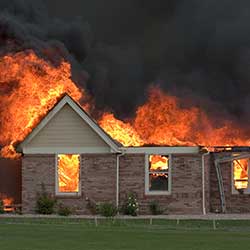
The Dangers of Dehumidifiers
- January 17
- Evans/Reilley
- Personal Injury Product Liability
In November 2016, a manufacturer expanded an existing recall to apply to 2.5 million of its dehumidifiers sold in the United States. Gree Electric Appliances, which is based in China, initially recalled dehumidifiers in 2013, after reports of the devices catching fire and causing property damage. The recall was subsequently updated, then expanded in 2014, and as of the November re=announcement, Gree dehumidifiers had caused 450 fires and $19 million in property damage.
According to the U.S. Consumer Product Safety Commission, Gree knew about its product defects in July 2012 – 15 months before issuing the first recall.
A CPSC investigation found Gree:
- Knew it was obligated to report the defect to the CPSC within 24 hours of its discovery, but failed to do so
- Deliberately deceived CPSC investigators
- Sold products bearing the UL safety mark, despite knowing its products did not comply with UL flammability standards.
Gree agreed to pay a $15.45 million civil penalty assessed by the CPSC and to implement a compliance program.
Other Brand Names in the Recall
If the name Gree doesn’t ring a bell, that could be because a small number of its devices were sold under that name. Other brands that sold the recalled dehumidifiers were: Danby, Premier, De’Longhi, SuperClima, Fedders, Fellini, Frigidaire, GE, Kenmore, Norpole, Seabreeze, and SoleusAir.
It’s not unusual for products to be sold under multiple and alternate brand names. In 2015, the CPSC announced that LG Electronics agreed to pay a fine of $1,825,000, for knowingly selling defective dehumidifiers under the Kenmore brand name. The CPSC said LG was aware of the defect in 2003 but didn’t issue a recall until 2012. By then, LG had received 107 reports of the dehumidifiers malfunctioning, causing $7 million in property damage, along with three incidents of smoke inhalation.
Another dehumidifier recall in 2016 involved machines made by China-based GD Midea Air Conditioning Equipment. The dehumidifiers – sold under 52 brand names in the U.S. and Canada – were blamed for $4.8 million in property damage that occurred due to fire or smoke.
Recall Response Rates
Recalls are often re-announced due to a low response rate – meaning, consumers haven’t returned their products for a refund, repair, or replacement. In discussing the 10 percent recall response rate for children’s products, a child safety advocate told USA Today that the public is generally unaware of recalls, because they’re not publicized. Recall notices appear on CPSC and manufacturer websites, but consumers tend to hear about recalls only when news outlets report them.
Unfortunately, with so many unscrupulous companies knowingly selling defective products, and the lack of publicity about recalls, consumers could have many dangerous products in their home.
If you currently have a dehumidifier in your home, do check the make, model, and manufacturer information and compare it to the CPSC’s list of recalled devices. When you buy new products, always complete the manufacturer’s product registration card, so you can receive mail about recalls.

 Serving Clients Throughout Texas
Serving Clients Throughout Texas
 Chip Evans is a partner at Evans & Herlihy. Chip brings to the firm more than 20 years of experience as a trial lawyer representing Plaintiffs. It is the desire to help individuals, not corporations, that attracts Chip to this side of the docket. [
Chip Evans is a partner at Evans & Herlihy. Chip brings to the firm more than 20 years of experience as a trial lawyer representing Plaintiffs. It is the desire to help individuals, not corporations, that attracts Chip to this side of the docket. [